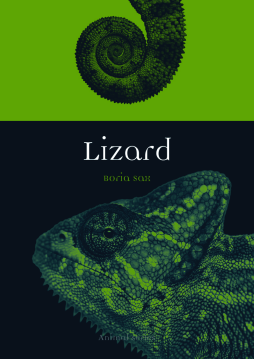
Additional Information
Book Details
Abstract
Our storybooks are full of lizards, but we usually call them something else—dragons, serpents, dinosaurs or monsters. These stories vastly increase their size, bestow wings upon them, make them exhale flame, and endow them with magical powers. Lizards stimulate the human imagination unlike most other animals, despite generally being small, soundless, and hidden from sight in burrows, treetops, and crevices. They can blend into a vast range of environments, from rocky coasts to deserts to rain forests. Their fluid motion can make us think of water, while their curvilinear form suggests vegetation. Their stillness suggests death, while their sudden arousal is like resurrection.
This delightful book gives lizards their due, demonstrating how the story of lizards is interwoven with the history of human imagination. Boria Sax considers the lizard as a sensual being—a symbol, a myth, a product of evolution and an aesthetic form. He describes the diversity of lizards and traces the representation of the reptile in cultures including those of pre-conquest Australia, the Quiché Maya, Mughal India, and central Africa. Illustrated throughout with beguiling images, Lizard is a unique and often surprising introduction to a popular but little-understood reptile.
“Sax’s actual lizards are as wondrous as their dragon and dinosaur relatives. In this sweeping natural/unnatural history, Sax presents lizards in their multiple biological and imaginary forms, from prehistory to the current sixth great extinction. With its wide-ranging research, engaging style, and eclectic illustrations, Lizard is Sax’s compelling extension of his award-winning studies of living animals and our folkloric and mythic creations.”
— Joseph Nigg, author of "The Book of Fabulous Beasts: A Treasury of Writings from Ancient Times to the Present"
"Though called toads or frogs, the Texas state reptiles are really lizards. But as Sax notes in Lizard, the term is a catchall, not a useful taxonomic category. Conceptually, lizards include not just various four-legged reptiles, but also crocodiles and tuataras, salamanders and armadillos, dragons and dinosaurs."
— TIm Morris, lection
Boria Sax teaches at Sing Sing prison and online for the graduate program in literature at Mercy College. He is the author of many books, including Imaginary Animals, also published by Reaktion Books.
Table of Contents
| Section Title | Page | Action | Price |
|---|---|---|---|
| Cover | Cover | ||
| Lizard | 3 | ||
| Imprint Page | 4 | ||
| Contents | 5 | ||
| 1. What is a Lizard? | 7 | ||
| 2. The Diversity of Lizards | 28 | ||
| 3. Lizards and Dragons | 64 | ||
| 4. Lizards and Dinosaurs | 97 | ||
| 5. The Lizard in Art | 128 | ||
| 6. Lizards Today | 156 | ||
| Timeline of Lizards | 168 | ||
| References | 171 | ||
| Select Bibliography | 177 | ||
| Associations and Websites | 181 | ||
| Acknowledgements | 183 | ||
| Photo Acknowledgements | 185 | ||
| Index | 189 |
